Abstract
Mean, age-standardized breast-cancer mortality rates for women of 41 countries, during 1970-71, were closely correlated with diet for 1964-66. Partial correlation analysis indicated that breast-cancer rates were positively correlated with total fat, animal protein and animal calories, independently of other components of diet. These 3 components were correlated with one another so closely that it was not possible, with available data, to say whether any one was associated with breast cancer independently of the other 2. In addition to, and independently of, these correlations, breast cancer was associated with consumption of refined sugar.
Breast-cancer mortality rates at 50-54 years during 1964-67 for 26 countries were closely correlated with childbearing, expressed as mean family size for women aged 45-49 years in 1960-61. However, this correlation was not independent of the correlations with diet, and it was concluded that variation of breast-cancer rates between countries arose predominantly from differences in diet. The variation of breast-cancer risk with childbearing, observed in clinial studies, seemed best regarded as a second gradient of risk, seen more readily as variation of breast-cancer rates within a population, where differences in diet would be relatively small.
The physiological basis for the association between breast cancer and diet was not clear. The dietary associations did not correlate in an obvious way with height, obesity and oestrogen levels, factors observed in clinical studies to influence risk of breast cancer. That the observed statistical associations were real was supported by published findings on effects of diet on mammary cancer in experimental animals, as well as the lower rates of breast cancer amongst vegetarians.
Full text
PDF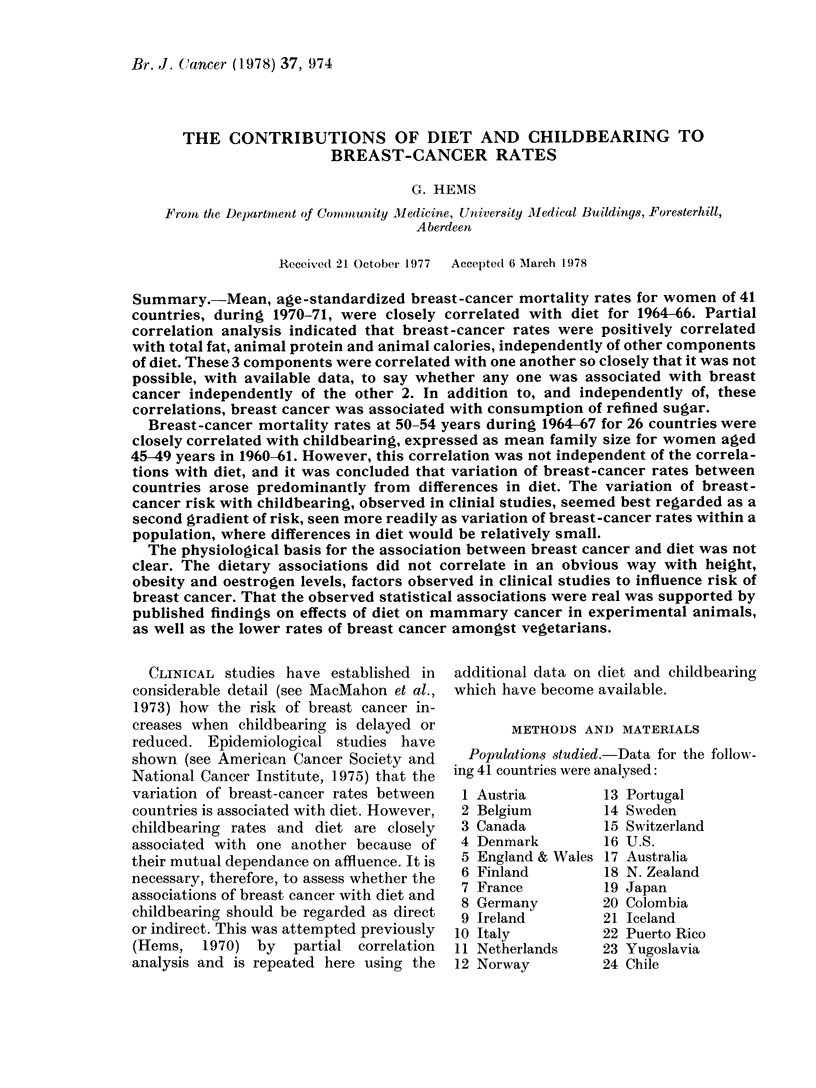
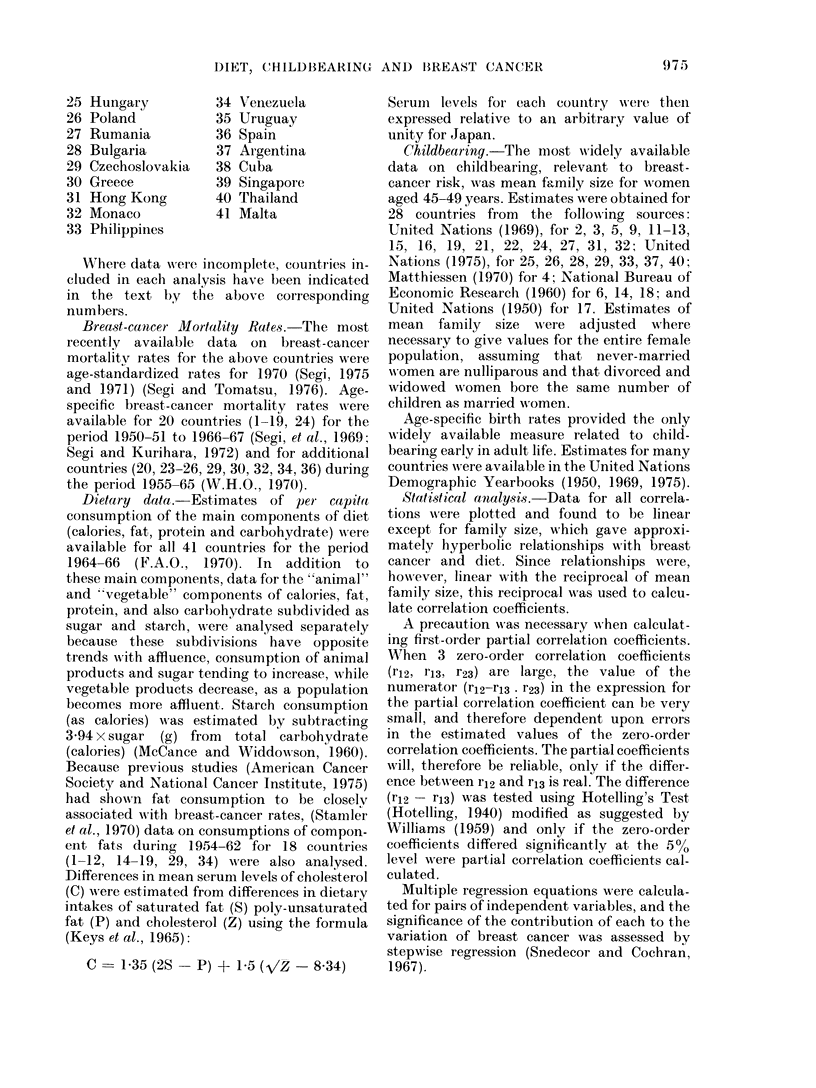
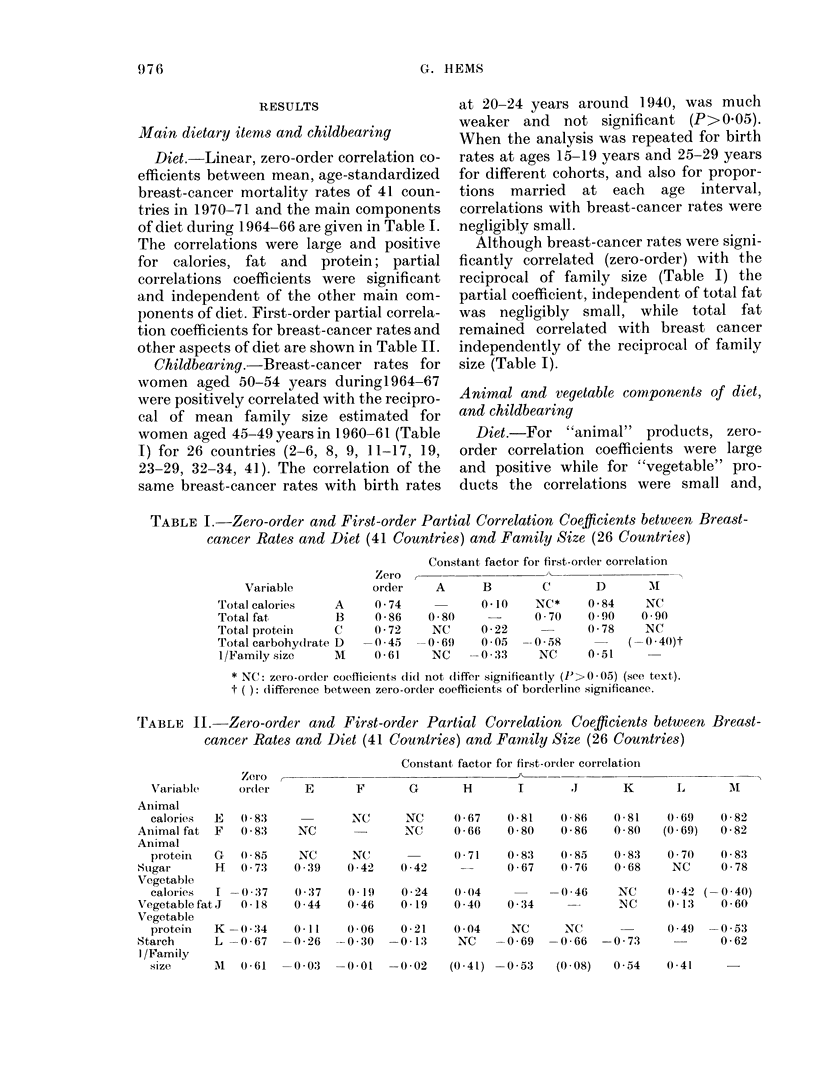
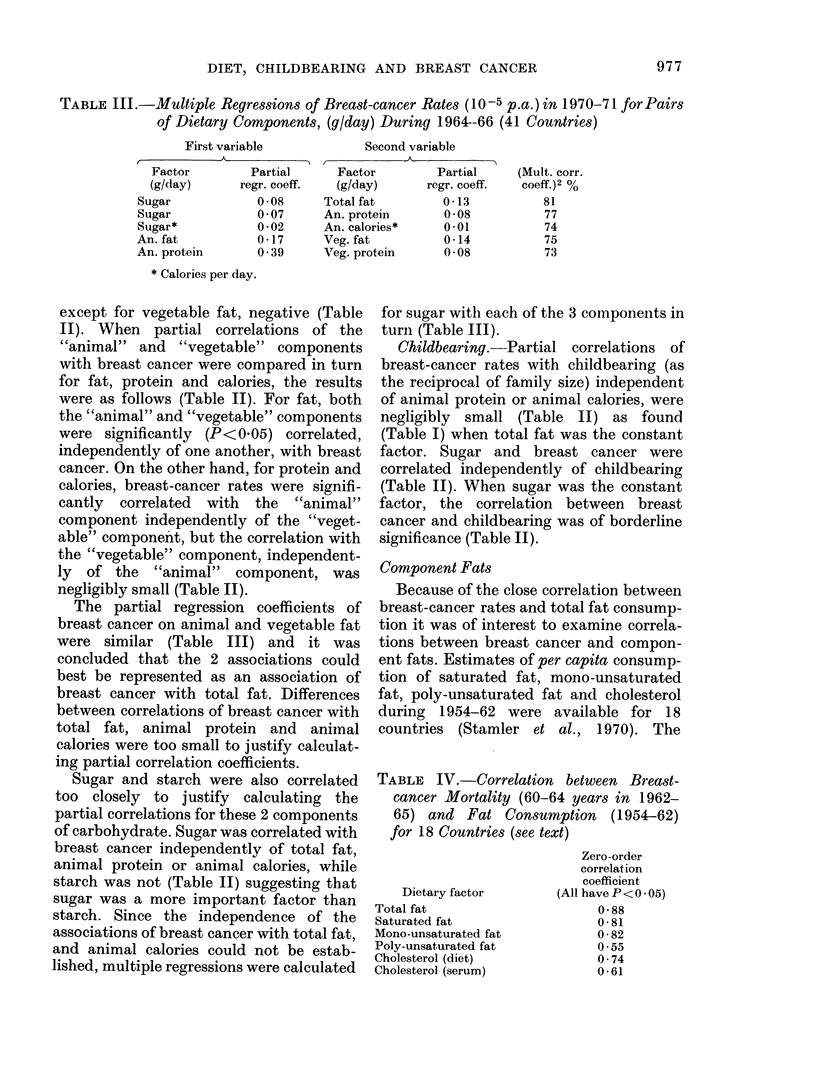
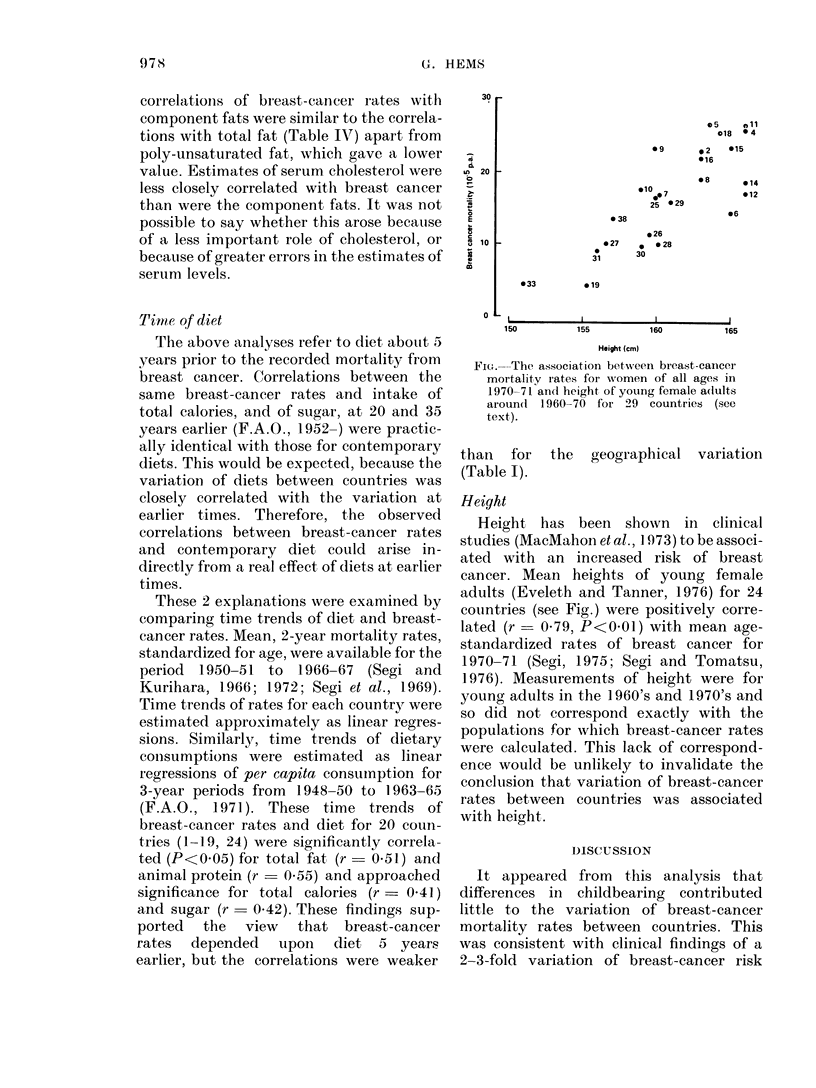
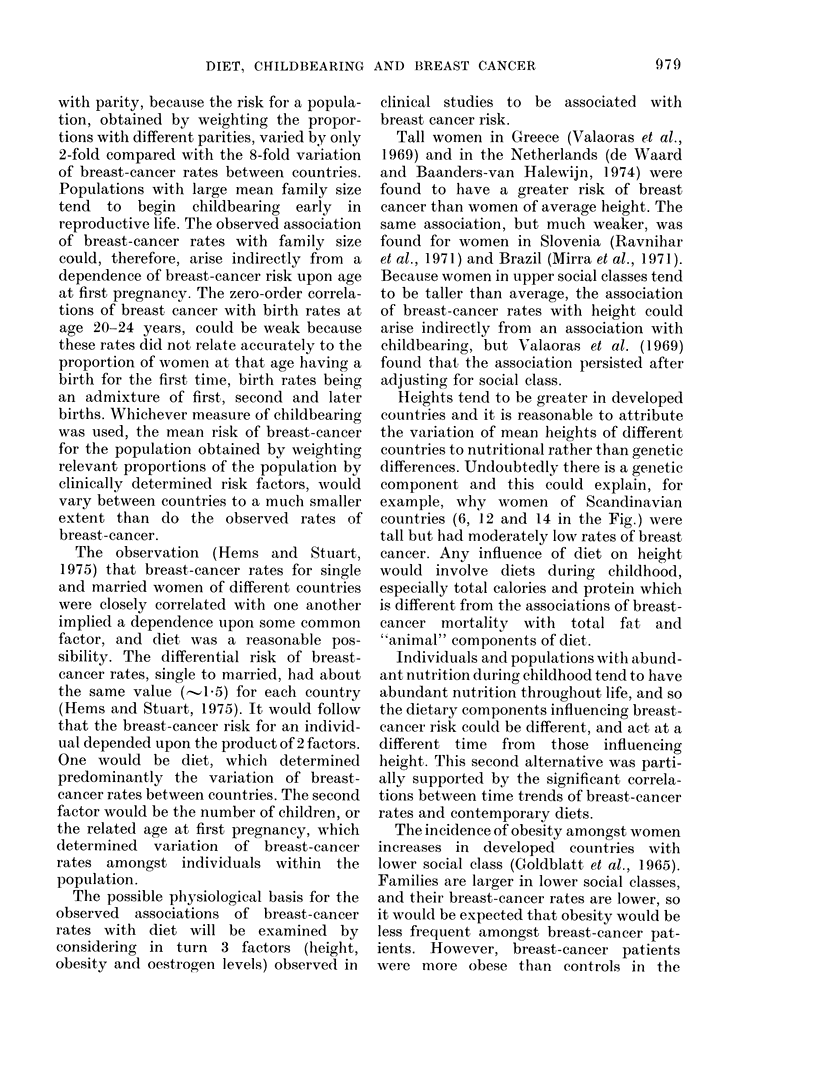
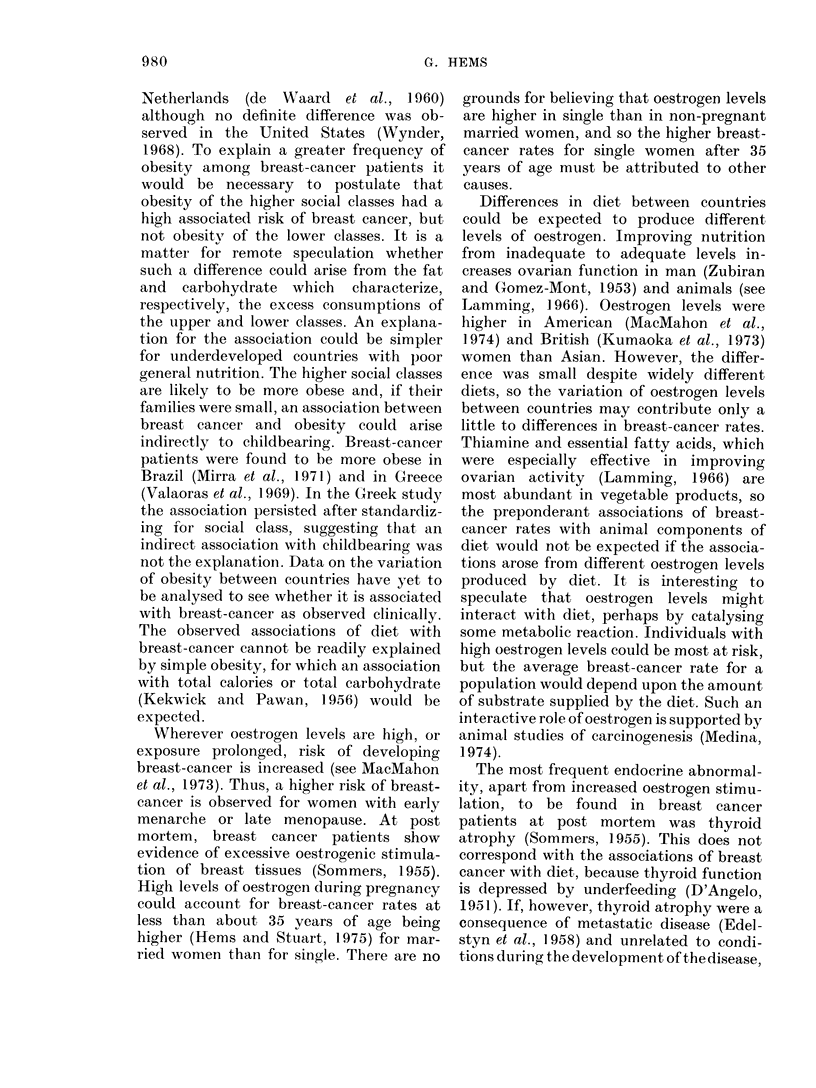
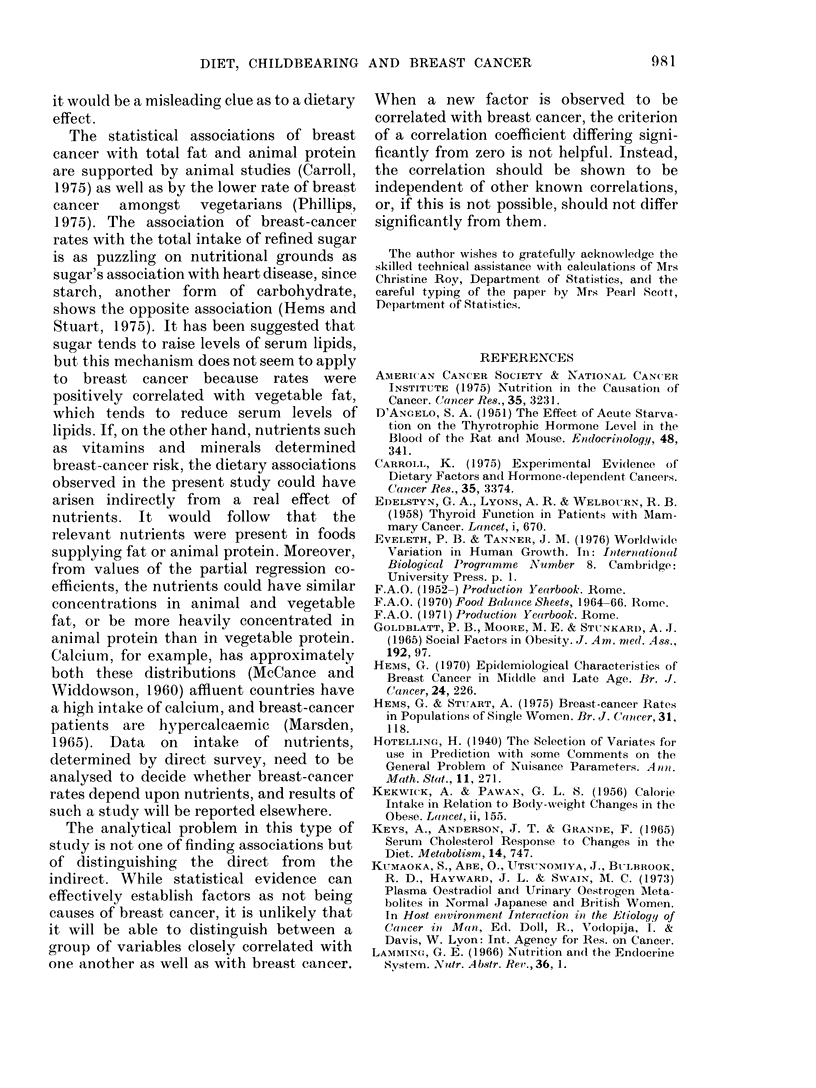
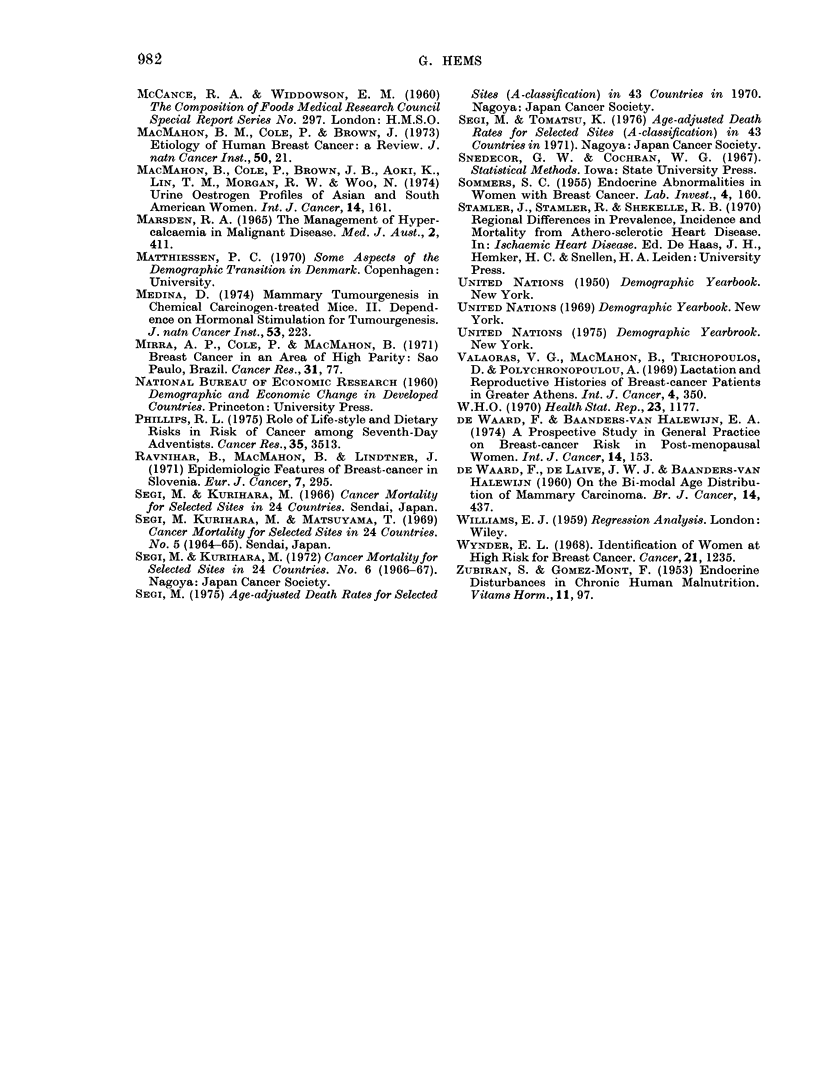
Selected References
These references are in PubMed. This may not be the complete list of references from this article.
- Carroll K. K. Experimental evidence of dietary factors and hormone-dependent cancers. Cancer Res. 1975 Nov;35(11 Pt 2):3374–3383. [PubMed] [Google Scholar]
- EDELSTYN G. A., LYONS A. R., WELBOURN R. B. Thyroid function in patients with mammary cancer. Lancet. 1958 Mar 29;1(7022):670–671. doi: 10.1016/s0140-6736(58)91088-2. [DOI] [PubMed] [Google Scholar]
- Hems G. Epidemiological characteristics of breast cancer in middle and late age. Br J Cancer. 1970 Jun;24(2):226–234. doi: 10.1038/bjc.1970.26. [DOI] [PMC free article] [PubMed] [Google Scholar]
- Hems G., Stuart A. Breast cancer rates in populations of single women. Br J Cancer. 1975 Jan;31(1):118–123. doi: 10.1038/bjc.1975.14. [DOI] [PMC free article] [PubMed] [Google Scholar]
- KEKWICK A., PAWAN G. L. Calorie intake in relation to body-weight changes in the obese. Lancet. 1956 Jul 28;271(6935):155–161. doi: 10.1016/s0140-6736(56)91691-9. [DOI] [PubMed] [Google Scholar]
- MacMahon B., Cole P., Brown J. B., Aoki K., Lin T. M., Morgan R. W., Woo N. C. Urine oestrogen profiles of Asian and North American women. Int J Cancer. 1974 Aug 15;14(2):161–167. doi: 10.1002/ijc.2910140204. [DOI] [PubMed] [Google Scholar]
- Marsden J. A. The management of hypercalcaemia in malignant disease. Med J Aust. 1965 Sep 4;2(10):411–414. [PubMed] [Google Scholar]
- Medina D. Mammary tumorigenesis in chemical carcinogen-treated mice. II. Dependence on hormone stimulation for tumorigenesis. J Natl Cancer Inst. 1974 Jul;53(1):223–226. doi: 10.1093/jnci/53.1.223. [DOI] [PubMed] [Google Scholar]
- Mirra A. P., Cole P., MacMahon B. Breast cancer in an area of high parity: São Paulo, Brazil. Cancer Res. 1971 Feb;31(2):77–83. [PubMed] [Google Scholar]
- Phillips R. L. Role of life-style and dietary habits in risk of cancer among seventh-day adventists. Cancer Res. 1975 Nov;35(11 Pt 2):3513–3522. [PubMed] [Google Scholar]
- Ravnihar B., MacMahon B., Lindtner J. Epidemiologic features of breast cancer in Slovenia, 1965-1967. Eur J Cancer. 1971 Aug;7(4):295–306. doi: 10.1016/0014-2964(71)90072-7. [DOI] [PubMed] [Google Scholar]
- SOMMERS S. C. Endocrine abnormalities in women with brest cancer. Lab Invest. 1955 May-Jun;4(3):160–174. [PubMed] [Google Scholar]
- Valaoras V. G., MacMahon B., Trichopoulos D., Polychronopoulou A. Lactation and reproductive histories of breast cancer patients in greater Athens, 1965-67. Int J Cancer. 1969 May 15;4(3):350–363. doi: 10.1002/ijc.2910040312. [DOI] [PubMed] [Google Scholar]
- ZUBIRAN S., GOMEZ-MONT F. Endocrine disturbances in chronic human malnutrition. Vitam Horm. 1953;11:97–132. doi: 10.1016/s0083-6729(08)61096-1. [DOI] [PubMed] [Google Scholar]
- de WAARD, de LAIVE J., BAANDERS-VANHALEWIJN E. A. On the bimodal age distribution of mammary carcinoma. Br J Cancer. 1960 Sep;14:437–448. doi: 10.1038/bjc.1960.47. [DOI] [PMC free article] [PubMed] [Google Scholar]
- de Waard F., Baanders-van Halewijn E. A. A prospective study in general practice on breast-cancer risk in postmenopausal women. Int J Cancer. 1974 Aug 15;14(2):153–160. doi: 10.1002/ijc.2910140203. [DOI] [PubMed] [Google Scholar]


